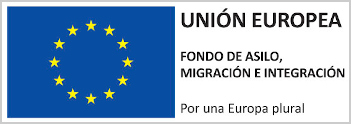The Educational Situation of Migrants and Ethnic Minorities in 15 EU Member States in Comparative Perspective
By Mikael Luciak
University of Vienna, Austria
A recent comparative study(1), which the author conducted on behalf of the European Monitoring Centre on Racism and Xenophobia (EUMC), focused, among other issues, on the following questions: Are there equal chances for all ethnic groups in the EU Member States’ educational institutions or do migrants and ethnic minorities experience inequality and discrimination? What do we know about minorities’ educational achievements and is it feasible to make comparisons between different countries on this issue? The study is based on country reports delivered from so-called National Focal Points that are part of a network called RAXEN (Racism and Xenophobia in Europe), established by the EUMC. It highlights dissimilarities between the Member States regarding their ethnic composition and their different methods of data collection and illustrates that there is a lack of significant current data, which limits the development of objective, reliable, and comparable information on these topics. However, study results also yield meaningful general conclusions and clear mandates for further research.
Issues of Comparability
Problems in comparing the minority populations’ educational situation arise for various reasons. The main difficulties regarding comparability across countries evolve from the fact that in the Member States there are:
- Different types of ethnic minority groups;
- Different terms and categories that are used for collecting data on migrants and ethnic minorities in the field of education;
- Differences regarding the availability of data; Different educational systems.
Types of Ethnic Minority Groups
Minority groups in the Member States vary in ethnicity, size, and status. Circumstances, how majority and minority populations initially came in contact with each other and the treatment of minority groups in the respective countries differ. Some Member States have a substantial ethnic minority population due to their colonial past (e.g. France, UK, the Netherlands). There, many of the minority members have attained citizenship. In other countries the presence of minorities is mostly due to recruitment of so-called «guest-workers» in the second half of last century (e.g. Austria, Belgium, Denmark, Germany, Luxembourg, Sweden). These countries have significant populations of non-nationals but also of descendants who have acquired citizenship in their new country of residence. Several countries – some of which used to be countries of emigration – experience more recent immigration (e.g. Greece, Italy, Spain, Portugal, Finland, Ireland).
While the absolute increase of school enrolment of migrants and minorities depends on immigration, some countries with little new immigration still show a relative increase of these groups among the school population, which in part is caused by lower birth rates among the majority populations.
Depending on each country’s specific situation, there are also indigenous groups or different national, autochthonous or linguistic minorities that have lived in the respective countries or specific territories for centuries. Thus, among the different types of ethnic minority groups in the Member States are:
- Indigenous groups (e.g. the SE1mi in Finland and Sweden or the Travellers in Ireland);
- National, autochthonous or linguistic minorities (e.g. Roma, who live in many countries);
- Ethnic minorities from former colonies (e.g. minority groups from North African countries in France or from Asian countries in the UK and the Netherlands);
- Labour migrants and descendants (e.g. from Turkey, and former Yugoslavia);
- Refugees and asylum-seekers (from various countries depending on regional conflicts and political turmoil);
- Repatriated groups or returned migrants (e.g. in Greece or Portugal).
Terms and Categories for Collecting Data
The countries of the European Union use different terms and categories for collecting data on migrants and ethnic minorities in the field of education. These criteria effect how data is collected for educational enrolment or achievement and determine, who receives what kind of services.
Most countries distinguish students according to citizenship or nationality. These countries are Austria, Belgium, Finland, France, Germany, Ireland, Italy, Luxembourg, and Spain. Collecting data according to these categories has the result that naturalized citizens or members of the second or third generation with a foreign background, who were granted citizenship at birth, no longer are recorded separately from the countries’ majority group. As a consequence, depending on each country’s situation, a smaller or larger group of students with a foreign background «disappears» from the statistics. Furthermore, in all countries, with the exception of Germany, data on university students do not differentiate between foreign students, who came to the country for the sole purpose of studying, and foreign nationals, who permanently live in the country.
If distinctions are not made according to ethnicity, data on the schooling situation of specific ethnic groups (e.g. Roma, Kurds, etc.) is not recorded. However, some countries also collect data on the students’ primary language and thus at times indirectly record data on particular ethnic groups.
There are great variations regarding the size of the student populations with foreign citizenship in the Member States. For example, in primary education there are countries with 2-4% enrolment of students with a foreign citizenship (e.g. Italy, Spain, Finland), others with 10-15% (e.g. Austria, the French Community in Belgium, Germany) or Luxembourg, which has 38%. Great differences also exist in absolute numbers. In recent school years there were more than 350.000 foreign students in primary schools in Germany (four years duration) and in France (five years duration) but less than 15.000 in Luxembourg (six years duration) and in Finland (nine years basic compulsory school).
Some countries use other categories than citizenship, such as immigrants and descendants, bilingual students, students with a foreign background, students with non-native ethnic background, or ethnic minority students.
Education statistics in Denmark distinguish between «immigrants» from different countries and «descendants» A person born outside of Denmark is an immigrant, if both parents are foreign citizens or born outside of Denmark. A person born in Denmark is a descendent if none of the parents living in the country are Danish citizens. These students, regardless of being immigrants or descendants, may or may not be Danish citizens. The term «bilingual students», which is another category used in data collections, is not used strictly according to its definition. Descendants with little knowledge of their parents’ mother tongue are called bilingual students in the same way as newcomers, who do not speak Danish.
In Greece, the term «immigrants» refers to either foreign immigrants with another ethnicity or to ethnic Greek immigrants, who have returned to Greece from other countries. Their citizenship status varies.
The Netherlands collects data on students with «non-Dutch ethnic background», independent of citizenship status. Different terms, such as «ethnic minorities» or «cultural minorities» as well as «allochtonen» are used interchangeably. An ethnic minority student is defined as someone, who was born in one of the target group countries or someone, who has at least one parent born in a target group country, a country from which most emigrants tend to be socially disadvantaged. Since not all countries of origin are regarded as criteria for disadvantage, certain countries have been selected as «target» countries (e.g. Turkey, Morocco, Surinam, Netherlands Antilles, etc.) The definition of target groups is part of the policy on disadvantaged peoples, for whom an extra school budget is made available for overcoming learning lags.
Portugal uses the category «cultural groups and nationalities», to collect data on students of various foreign nationalities, returned emigrants, and Roma.
Sweden collects data on «students with foreign background,» differentiated by countries of origin. This category includes students born to foreign parents in Sweden and students born abroad.
The U.K. distinguishes groups according to «ethnicity». However, the categories used for ethnic data monitoring since 2003 refer to skin colour and geographic origin (i.e. regions or countries) rather than to ethnicity. The main categories used are White, Mixed, Asian or Asian British, Chinese, Black or Black British, and Any Other Ethnic Background. Each main category has subcategories. For example, for the category «White» the subcategories are White British, White Irish, Traveller of Irish heritage, Gypsy/Roma, Greek/Greek Cypriot, Turkish/Turkish Cypriot and White European.
Categorisations of groups according to foreign or ethnic background do not always allow distinction between recent immigrants and members of established ethnic minority groups. It is thus more difficult to analyse certain developments such as educational achievements of groups over time.
Some countries also collect separate data on indigenous or national, autochthonous minorities. There are substantial numbers of Roma students in several countries (e.g. Spain, Portugal, Greece) and other particularly large groups such as the Swedish-speaking minority in Finland, the Finnish minority in Sweden, the Muslim minority in Greece, or Travellers in Ireland.
In view of the different ethnic minority groups in the Member States and of the non-standardized methods of collecting data on these groups, it becomes rather difficult to arrive at meaningful comparisons of aggregate data on migrants and ethnic minorities. Even an assessment of the same ethnic minority or nationality group in different countries is at times complicated, because not all countries make the same differentiations.
Education Systems
Another circumstance that hampers comparability of data is the fact that education systems in the Member States vary considerably. There are countries where schooling starts at age four (e.g. Ireland) and others where it starts at age seven (e.g. Sweden). In some countries, students transfer to different school types after four years of primary school (e.g. Austria), while in others basic comprehensive schooling lasts nine years (e.g. Finland). Some countries have less variation of secondary school types, while in others (e.g. Sweden) students may choose between a great variety of different tracks and specialisations. Depending on each country’s school system, aggregate data on migrants and ethnic minorities exists for a different number of years of consecutive schooling (e.g. four years of primary schooling in Germany or nine years of compulsory schooling in Denmark). All countries collect data on minority student enrolments at different educational levels but only a few (e.g. United Kingdom) also collect data on school completion rates.
Educational provisions for migrants and ethnic minorities vary in the EU Member States. Among these provisions are language programs (native language and second language instruction), culture of origin courses, reception programs for newcomers, and compensatory education. Native language instruction, which has been recognised by many experts as fostering the language development of both, the native language as well as the language of the country of immigration, is not offered to all minorities in all Member States. Programs of second language instruction are not always lead by appropriately educated and well-trained staff. In addition, there are differences regarding the integration of intercultural approaches to teaching. School textbooks and curricula do not always depict the countries’ ethnic diversity appropriately.
Despite the lack of comparability of data across countries, general trends can be derived from the interpretation of data on educational enrolment and achievement, as well as from reports about specific phenomena faced by migrants and ethnic minorities. These include segregation, exclusion, limited access to certain educational institutions, unequal treatment, verbalized prejudice, harassment by teachers and peers, as well as violence.
Inequality, Discrimination, and Racism in the Field of Education
Enrolment and achievement data frequently show an overrepresentation of migrant and ethnic minority groups in educational institutions with lower academic demands, an overrepresentation in special education, as well as disproportional early dropout and expulsion rates. Given the lack of research in this area, it is rather difficult to assess the extent to which educational underachievement of migrants and ethnic minority groups can be traced back to forms of discrimination. Many factors influence their educational attainment, e.g. language competency, socio-economic factors, parents’ educational background, and cultural values. Still, among signs of discriminatory attitudes and practices are that minority students are faced with low teacher expectations, assignment to special education for reasons other than disability, placement in lower than age-appropriate grades, and restricted admittance into more prestigious or private institutions. In addition, disadvantages exist when there is a lack of or low quality of compensatory programs, a lack of effective language programs and of specifically trained language teachers, a lack of intercultural curricula and minority education programs as well as a lack of religious pluralism.
Differentiated data shows that great differences exist in achievements between various migrant and ethnic minority groups. While some ethnic groups achieve significantly above average results or even outperform majority students on some educational levels, others are very much behind. For example, in England, students with Chinese and Indian backgrounds have higher achievements than White majority students, while Black students (the group also most likely to be excluded from school), or students with Pakistani and Bangladeshi backgrounds achieve below average.
Despite overall lower success ratings for educational attainment, there are positive developments reported by some countries regarding the starting performance of students with foreign backgrounds (e.g. in the Netherlands). Second-generation migrants, in many cases, do better than new immigrants. Studies also show that these students often attain higher educational levels than their parents (e.g. in Germany). Across all ethnic groups, female students tend to achieve better than males.
PISA study results of students’ reading, mathematical and scientific literacy skills show that in most countries, native students perform better than students with a foreign background (born in the country or abroad).(2) Results from Ireland, indicating that non-native students surpass the average score of native students, as well as from Denmark and Belgium, indicating that non-native students perform better than native-born students with a foreign background, have to be treated with caution because of small and unreliable study samples. In order to draw better evidence-based conclusions, the collection of more differentiated quantitative data as well as qualitative research on educational achievement of migrants and minorities in the Member States is needed.
Reports on non-migrant ethnic minority groups (national, autochthonous or linguistic minorities) show underachievement in education of several groups, among them Roma (and Sinti) in several countries, Travellers in Ireland and Northern Ireland, or the Muslim minority in Greece. The reasons for the lower academic achievement of these groups vary and are manifold. For some groups, e.g. the SE1mi and the Swedish-speaking Finns in Finland or the SE1mi and the Swedish Finns in Sweden, very little data on achievement was supplied.
Overall, there is a lack of research and data concerning the reasons for the educational underachievement of non-migrant ethnic minority groups. It seems fair to say that in many cases, a history of social exclusion, assimilationist tendencies, and a monocultural orientation in education lead to distrust in the educational system and to low expectations about the benefits of educational attainment. Since a large proportion of the groups’ older generation has not met basic educational standards, it has been problematic to increase the educational attainment of the younger generation. Some consider schooling of their children even as harmful since, in their view, it deprives children of their family and socializes them into different cultural values and norms. The socio-economic differences between many national minorities and the majority of the population in the Member States are still considerable. This creates not only problems relating to education, but also to other aspects such as employment and housing, which also negatively influence the educational situation of these groups.
The EU Member States report various acts of discrimination and racism in the area of education. For example, there are reports about segregation of minorities in special «minority classes» or about exclusion and harassment for cultural reasons (e.g. for wearing a headscarf). However, the reported incidences are not a reliable indicator of their actual frequency of occurrence. Instead, countries with a better functioning reporting system are likely to report more cases than others. Significant differences exist in the EU Member States regarding the existence of legislative measures to combat ethnic discrimination, racism, and inequalities. Some countries have specific anti-discrimination or equal treatment legislation pertaining to the field of education, such as Ireland, the Netherlands, Portugal, the United Kingdom, or Sweden (in higher education). Other countries lack explicit legislation on this matter or are currently proposing to introduce new laws in accordance with Directive 2000/43/EC(3). The same is true for monitoring bodies, which are implemented in some countries to oversee the laws on anti-discrimination and to record incidents of discrimination and racism. Such bodies may be official and state-organised, or unofficial and run by NGOs.
Conclusions
It can be concluded that there is a lack of comprehensive and comparable data on the educational situation of migrants and ethnic minorities in the EU Member States. In order to better understand the situation of minorities in education, the availability, the scope, and the quality of data has to be increased. This pertains to data on educational enrolment and achievement, as well as to the monitoring of acts of discrimination and racism. Also, there is a need for more qualitative (ethnographic) research on the variability in educational performance of minority groups.
In spite of various support programs (e.g. reception programs, native language and second language programs), of efforts to introduce new curricula to suit the needs of a multicultural student body, as well as of integration and anti-discrimination initiatives, inequalities continue to persist to a great extent. On the one hand, one needs to gain a good understanding of the particularities of each education system in order to better understand the relevance of the unequal distribution of migrants and ethnic minorities in the different school types and tracks, their lower educational attainments and earlier dropout rates. On the other hand, further research will be necessary to understand which factors determine the differences in educational achievement between different ethnic groups.
Aside from primary language and cultural differences as well as differences caused by the varying socio-economic conditions for different groups, discriminatory practices and unequal power relationships between the majority populations and minority groups negatively influence the educational attainment of minorities. Lasting experiences of discrimination may result in distrust in the education system by members of these groups. Such negative relations and prejudice may also interfere with communication between teachers and students, teachers and parents, as well as between peers of different ethnicities.
Other factors, which complicate the motivation to achieve and to integrate, may be rooted in uncertainties, such as whether migrants expect to stay in their new country of residence. The motivation to achieve may also be affected by cultural perceptions of what it takes to make it in the receiving society. An important consideration is, whether integration into the majority culture is believed to actually lead to advancement rather than to barriers such as unequal chances in the employment area.
Necessary steps have to be taken, which go beyond the mere introduction of language programs for minorities or multicultural curricula. Minority members not only have to believe that their efforts to attain higher levels of education will actually pay off, but they also must experience that the pledge for equal treatment becomes a reality in all areas of society.
NOTES
(1) Comparative Study On Education – Measures of Discrimination and Integration of Migrants and Ethnic Minorities in the Field of Education in the 15 Member States of the European Union. Study on behalf of the European Monitoring Centre on Racism and Xenophobia (EUMC), Vienna, October 2003.
(2) OECD (2001), Knowledge and Skills for Life. First Results from the OECD Programme for International Student Assessment (PISA) 2000;
(3) Council Directive 2000/43/EC of June 29, 2000, implementing the principle of equal treatment on grounds of racial and ethnic origin.
© Mikael Luciak (University of Vienna, Austria)
















